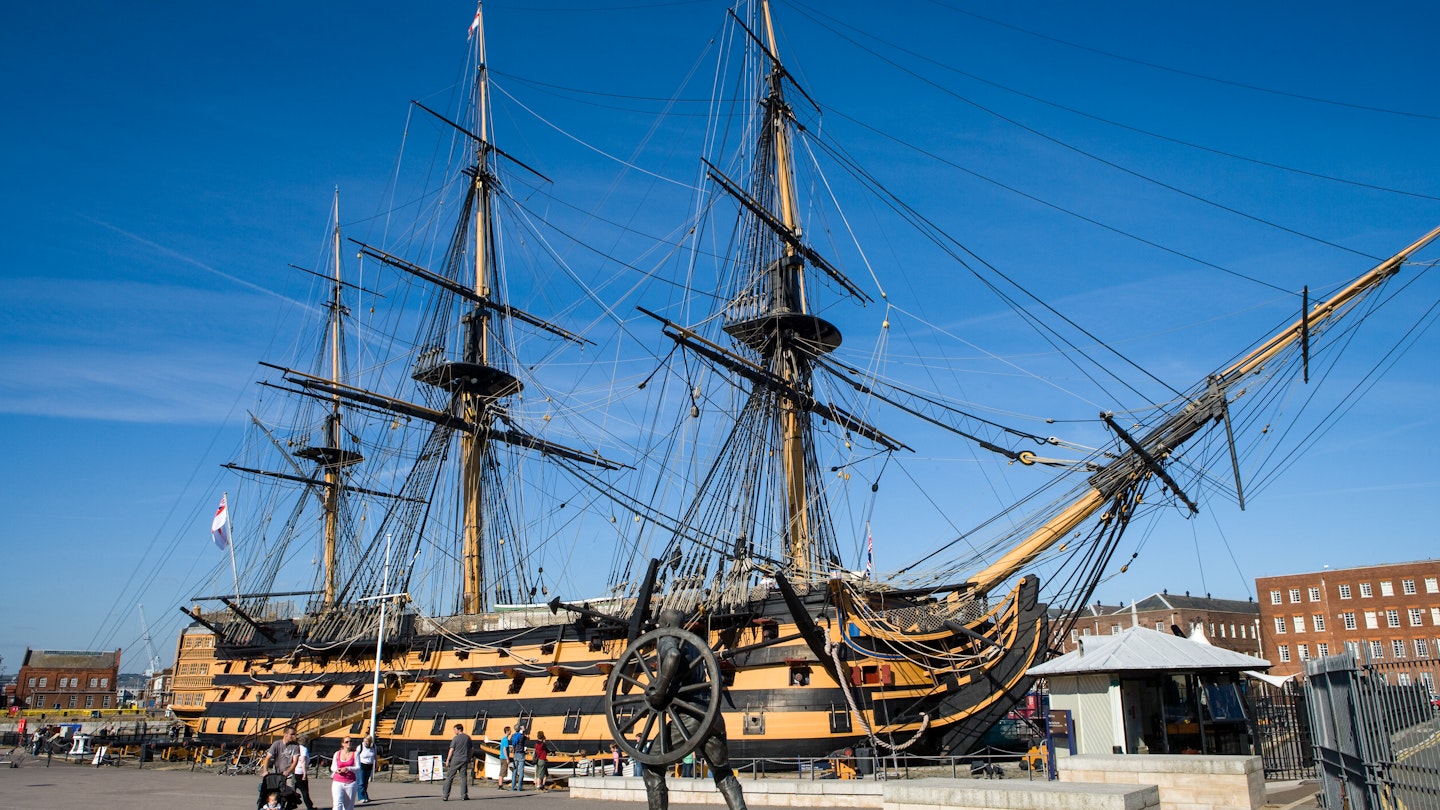England’s a country with a lengthy, diverse history, so it’s no surprise that it’s home to some of the world’s finest museums. Happily, they’re not all confined to London either.
From epic Victorian warships at Portsmouth Historic Dockyard to poignant documents and memories at Liverpool’s International Slavery Museum, there are a wealth of important and distinct museums up and down England. Here’s a look at some of the best.
Portsmouth Historic Dockyard: Best for Maritime History
You’d be hard-pressed to find a maritime museum anywhere in the world as vast and fascinating as Portsmouth’s Historic Dockyard. Part of an existing Royal Navy base, it houses the National Museum of the Royal Navy. The real stars of the show, however, are the enormous historic warships available to explore.
1860’s HMS Warrior was the world’s first iron-hulled warship, while the immaculately-restored HMS Victory was Lord Nelson’s flagship at the Battle of Trafalgar in 1805. Listen to the gripping audio guide while exploring Victory and recount Nelson’s last moments before he was fatally wounded. The Historic Dockyard is also home to the delicate timber remains of Henry VIII’s legendary sunken warship the Mary Rose, now included as part of the museum’s excellent value Ultimate Explorer ticket.
British Museum: Best for World History
It’s well known that the British Museum houses thousands of ancient treasures plundered from other countries. How much longer items like the Elgin Marbles and the Rosetta Stone will stay in the British Museum is anyone’s guess, but for now, this catalog of human history in the heart of London is where you will find them.
Just arriving at the place is an experience itself as you wander in beneath the cavernous tessellated glass roof of the Great Court.
Natural History Museum: Best Free Museum
Who doesn’t love dinosaurs? Whether you’re a wide-eyed child or a seasoned museum veteran, it’s hard not to be amazed by the enormous Diplodocus cast skeleton welcoming visitors into the magnificent Hintze Hall of London’s Natural History Museum.
Housed inside the ornate terracotta facade of a building dating from 1881, the museum’s collection includes more than 70 million botanical items, 55 million animal exhibits, nine million archaeological relics, and 500,000 rocks and minerals. Of course, you won’t have time to see it all, but look out for the most intact Stegosaurus fossil skeleton ever discovered and a cross-section of a 1,300-year-old giant sequoia. Don’t forget to visit the famous Charles Darwin statue on the main staircase of Hintze Hall. Not bad for a free museum.
Black Country Living Museum: Best Open-Air Museum
“Black by day and red by night” was how American visitor Elihu Burritt described the Black Country in 1862, reflecting the intensity of manufacturing in this industrial region of the West Midlands. Nowadays, you can get a window into what life was like back then (with much less smoke and soot) by visiting the Black Country Living Museum.
Explore a painstakingly recreated 19th-century industrial landscape featuring 26 acres of reconstructed shops, pubs, and houses filled with (almost) real-life personalities explaining their lives. Fans of Peaky Blinders will recognize the famous canal-side filming location.
National Railway Museum: Best for Train Fans
The beautiful Medieval city of York holds many reasons to visit, but the National Railway Museum is one of its true gems. For anyone enamored by the romance of 19th-century and early 20th-century steam trains, this is unmissable.
In addition to wonderfully restored locomotives arranged around the turntable of the Great Hall, the museum showcases the sleek blue curves of Mallard, which famously set a never-surpassed speed record for a steam train in 1938 of 126mph. The most unique item here isn’t actually a steam train; it’s the rare opportunity to see an original 1960s Japanese Shinkansen—otherwise known worldwide as the Bullet Train.
International Slavery Museum: Best for Gaining a Deeper Historic Perspective
Despite Britain’s deep and shameful ties with the trans-Atlantic slave trade, there are few spaces that tell the story of slavery and educate along the way. Liverpool’s International Slavery Museum does a superb and harrowing job of depicting the horrors of the slave trade and acknowledges Liverpool’s significant role as a port city during that time.
Spread across three large rooms inside the Royal Albert Dock’s Merseyside Maritime Museum, the collection of documents, mementos, and anecdotes of the dangerous ocean crossings (the Middle Passage) offers powerful insights into this most egregious of events.
We The Curious: Best for Kids
Want to engage kids and get them thinking about the world around them? Bristol’s We The Curious is a science museum that goes beyond the usual exhibits to bring out young people’s natural curiosity on all sorts of subjects, even encouraging them to leave their own questions pinned to the wall as a way of expanding the conversation.
Whether it’s big questions about what the future will look like or abstract concepts like why rainbows make people happy, this unique science center interacts with visitors in a playful manner. Don’t forget to check out the spectacular 3D Planetarium shows on the first floor!
Coffin Works: Best Unusual Museum
A fabulous (if slightly macabre) time capsule, entering the Coffin Works in Birmingham takes you back to when this proud industrial metropolis was known as the “City of 1000 Trades.”
With dusty shelves, tools, and workbenches at Newman Brothers left as they were when the company ceased trading in 1998, visitors can glimpse the inner workings of a 19th-century factory that produced elaborate brass fittings for coffins. Funerals were big business in Victorian England, and passionate guides at this quirky museum do a superb job of explaining why.





